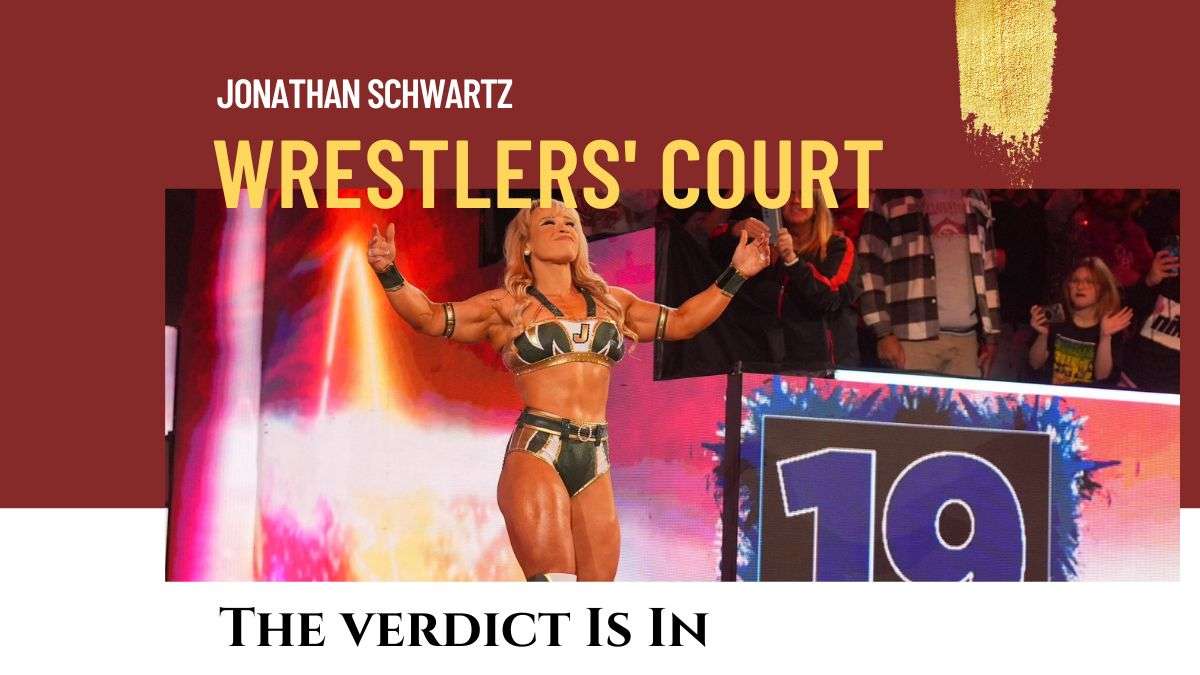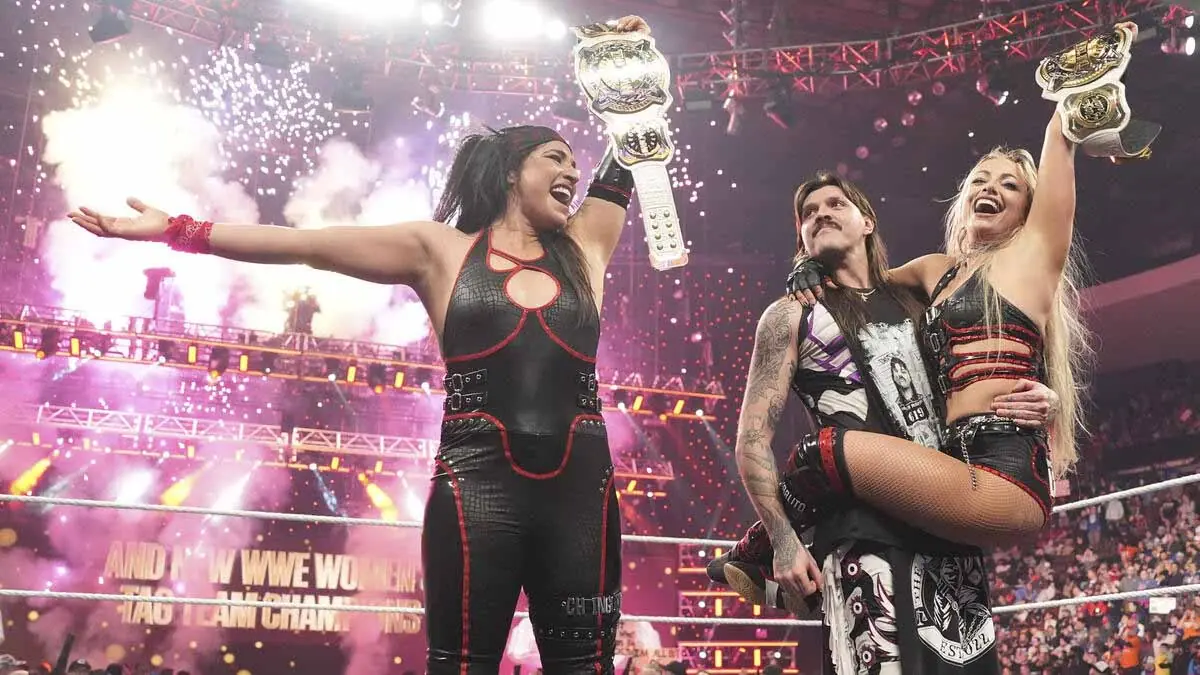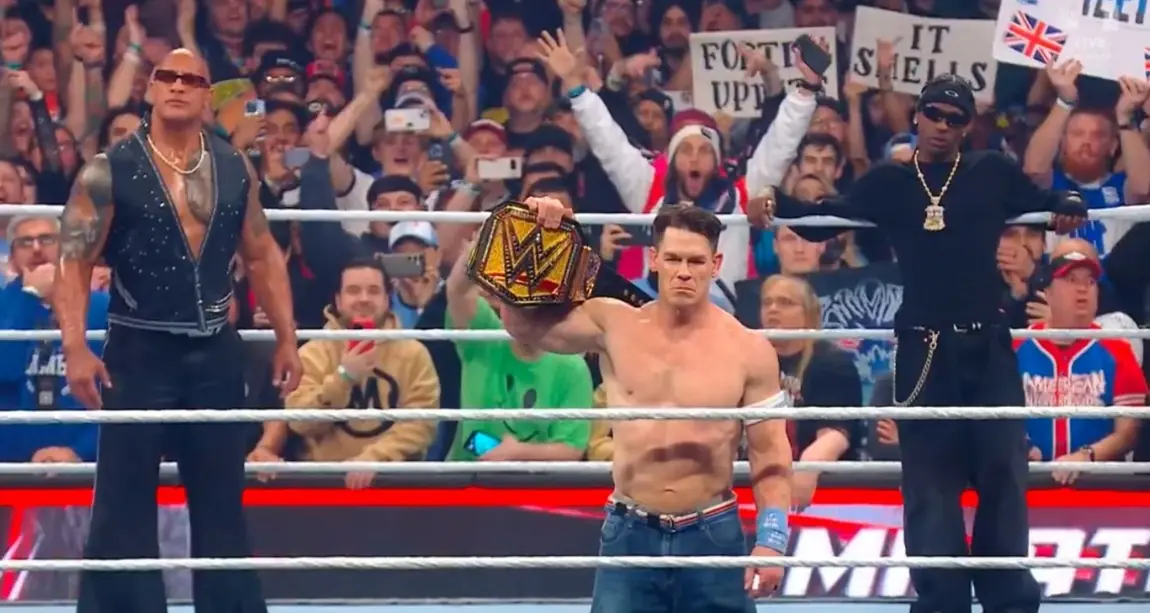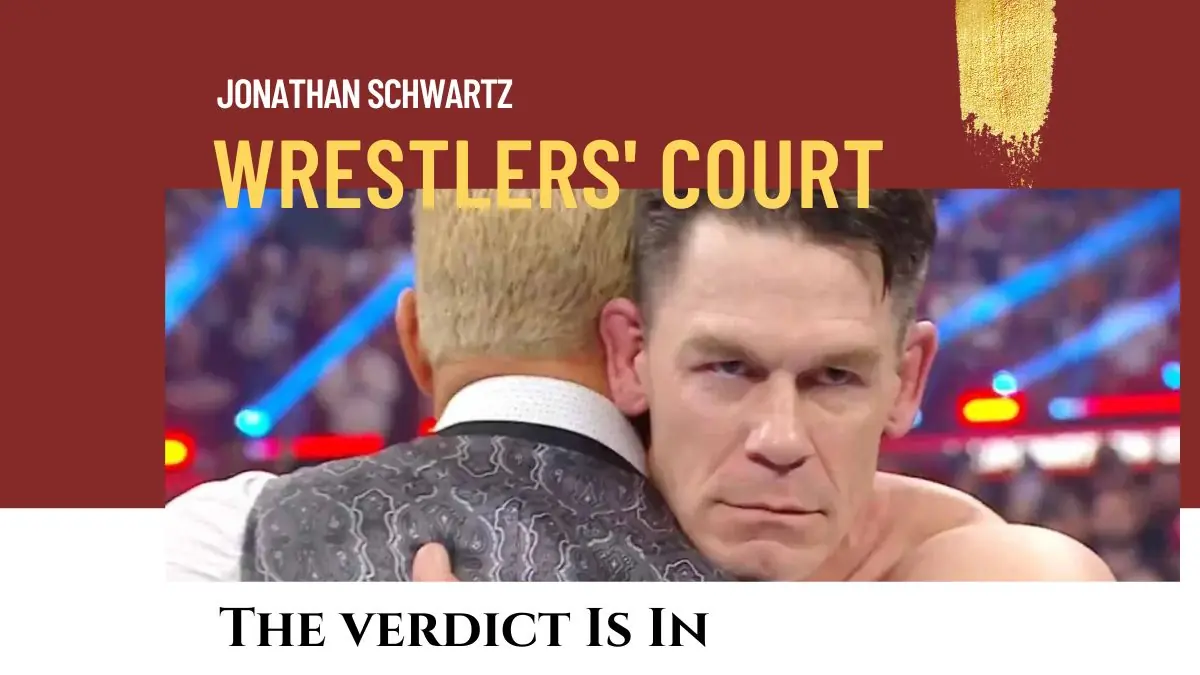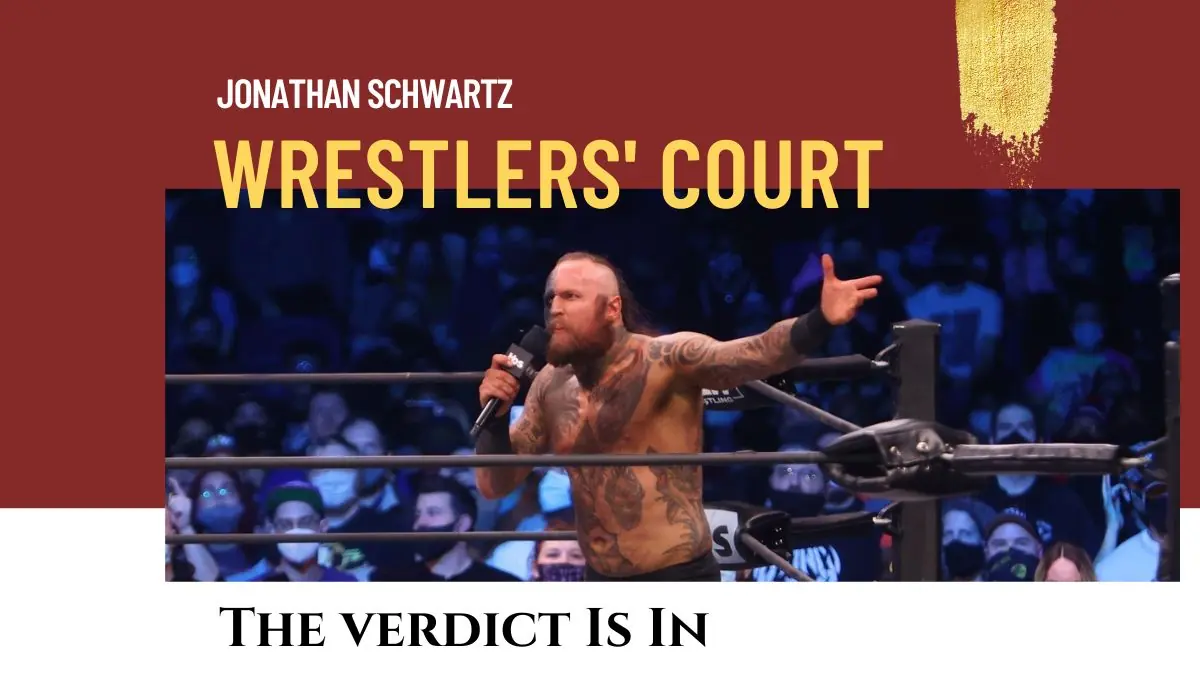On January 16, WWE and TNA announced a formal partnership. This agreement sees enhanced exposure for wrestlers from each brand on the others’ television shows and pay-per-views. WWE and TNA have been openly working together for over a year now, highlighted by the appearance of then-TNA stars like Jordynne Grace at last year’s Royal Rumble, and new TNA world champion Joe Hendry at this year’s Rumble.
For the most part, interactions between the companies take place on TNA’s weekly Impact television show and WWE’s NXT brand. Wrestlers from each company have challenged for the others’ titles and engaged in longer-form, cross-brand programs. It’s notable that so far, TNA has been positioned opposite the historically developmental NXT rather than WWE’s flagship brands RAW and SmackDown. For example, Jordynne Grace. Grace only made it to those shows once she signed with WWE.

Considering the relative size of both companies and their audiences, TNA’s positioning under the agreement with WWE feels generous.cTNA’s current parent company, Anthem Sports and Entertainment, is privately held. It is difficult to day how much either TNA or Anthem is worth. It would be fair to guess that this number is orders of magnitude lower than WWE’s value-which stood at almost $9 billion when acquired by TKO Group Holdings. Over the past few years, TNA’s audience numbers have grown and they have filled larger venues — but nothing like the stadiums WWE sells out for its major pay-per-views or even the arenas it maxes out for TV tapings.
For a brand that actively seeks partnerships as a way of growing its audience, TNA has already seen better creative results with WWE than it did with their last venture. In 2020 TNA worked with AEW — at the time a new entrant on the US wrestling scene. The announcement was shocking; Kenny Omega beat Jon Moxley for the AEW championship after interference from then-TNA Executive Don Callis and helicoptered out of the arena to appear on the next TNA Impact broadcast. Omega and Callis were the focus of the partnership; Omega won the Impact World Championship as well, furthering his reputation as a “belt collector. There were further exchanges. Karl Anderson and Doc Gallows defended their Impact Tag Team titles on AEW TV, and AEW’s Thunder Rosa challenged Impact women’s champion Deonna Purrazzo at TNA’s Slammiversary pay-per-view.

The AEW-TNA partnership was less creatively satisfying than one would have hoped. Omega held the TNA championship for about four months. Rather than dropping it to an ascending TNA star, he lost the belt on the first episode of AEW Rampage to middle-aged Christian Cage, a fellow AEW wrestler who had just unretired after years due to injury. Cage had considerable history with TNA, as he was a former NWA-TNA champion, and for that matter had notched a pair of WWE World championships. He had spent most of his career in the mid-card, where he lives to this day. Cage lost the TNA Championship to Josh Alexander — who immediately lost it to Moose a la Money in the Bank. Omega and AEW could have enhanced TNA and their partnership by having Omega drop the belt to either man directly; instead, fans got a watered-down, distracted program followed by the quiet dissolution of the companies’ agreement. AEW and TNA last worked together following AEW’s purchase of ROH. New ROH owner Tony Khan needed to move ROH’s women’s championship away from TNA-contracted Purrazzo.

Wrestling fans and observers see the AEW-TNA agreement as a lost opportunity. It may have helped increase then-AEW champion Omega’s exposure among dedicated North American wrestling fans but stopped well short of a full and fair talent exchange
I’ve written about Khan’s treatment of ROH before (see Wrestler’s Court: Cautionary stories over ROH sale), but there’s a difference between a working agreement between distinct companies and the liberties one can take when one owns multiple wrestling promotions. More on that later.
In some respects, the NXT brand is the junior partner in the TNA working agreement. TNA was founded in 2002, although it has gone through several changes in ownership; NXT started in 2010, originally as a reality show. It relaunched a standalone brand in 2012. Since then WWE Chief Creative Officer Paul “Triple H” Levesque has tried to establish NXT as its own entity — hiring experienced independent wrestlers to shore up programming and appeal to fans of “super indies” that privilege smaller, more skilled and athletic wrestlers who rarely succeed on mainstream WWE TV. Levesque struggled to implement this vision under then-WWE CEO Vince McMahon’s micromanagement. Now that Vince is gone, an alliance with TNA gives Levesque easier access to talent outside WWE’s existing pipeline and lends NXT a bit more credibility outside the WWE universe.

It’s a low-risk proposition for WWE, which has increasingly tested one-off partnerships with other promotions in Japan and the US; acknowledged wrestlers’ work with other promotions on commentary; and broadened its approach to developing talent by offering first-look contracts to support developing independent wrestlers as part of their new WWE Independent Development (ID) program. Under this program, WWE provides a kind of accreditation to select wrestling schools, in the hopes of creating a more reliable stream of talent where new wrestlers learn how to work in front of varied audiences (like the territories system back in the day, which NXT has tried but failed to provide in making new stars). A few years ago, WWE purchased the super indy federation EVOLVE. WWE is relaunching the brand as a showcase for new wrestlers on the streaming site Tubi.
While the AEW-TNA deal may seem groundbreaking to newer fans, WWE has a history of cooperating with other promotions when it suits them. As far back as the 1970s WWE developed relationships with Japanese and Mexican promotions to secure the services of popular acts like Antonio Inoki and Mil Mascaras. Through the early 1980s, WWE champion Bob Backlund fought NWA champions like Harley Race and Ric Flair, and AWA champion Nick Bockwinkel. During the moribund early 1990s WWE imported in a new generation of Mexican, Japanese and Puerto Rican wrestlers (WWE had a particularly interesting ongoing relationship with the Puerto Rican WWC promotion since its head, Victor Quinones, was Gorilla Monsoon’s son).

Pre-NXT, WWE also established working agreements with holdout independent promotions like Jerry Lawler’s USWA, Jim Cornette’s SMW, the remnants of the NWA and Paul Heyman’s ECW. These agreements helped spike interest in specific angles and gave WWE access to new talent. I’ve written about the role that independent promotions like Florida Championship Wrestling, Deep South Wrestling, Ohio Valley Wrestling, Heartland Wrestling Association and others have played: Wrestlers’ Court: What’s next for NXT?
WWE has invested considerable resources in bringing a developmental system in-house but has to be aware of its relatively low “connect percentage” in making new stars. For years, Triple H has sought to define NXT as a third, full-fledged, independent WWE brand equal to RAW or SmackDown. Perhaps the January Agreement brings this closer to fruition since it gives NXT wrestlers the chance to work with more experienced talent on different shows before an educated audience.
When I first started writing this column, I marveled at the number of promotions that seemed to be operating above a local, independent standard. I cautioned that this was likely unstable, and that wrestling’s predatory business practices would lead to consolidation. As it was, I listed my favorite promotion — Lucha Underground — despite the fact that by that point it persisted only on paper. I still mourn its loss.
A quick survey of the mainstream US scene shows how Lucha Underground has pervaded American pro wrestling, the presentation of professional wrestling in the biggest venues in the world. WWE and AEW (and proxies like NXT, TNA and ROH) have recognized and competed to sign lucha talent but with few exceptions seem to have no idea how to build lasting programs around them. I understand that as a property, with a basis in its partnership with Mexico’s AAA promotion, Lucha Underground is dead. I have little confidence that a resurrected version on WWE TV would fare better, even with Levesque holding the pen. I would love to see something that gives those performers the freedom to create in-ring. Lucha Underground failed in less than five years, so I can’t say that it was a business success. The wrestling market may be stretched thin as it is but I think in capable hands with creatives who understand the product, it should be possible to bridge the gap to the American audience.
Pro wrestling’s last great boom centered around the highly-resourced competition between WCW and WWE, but other, smaller promotions played key roles in transitioning talent from one promotion to the other as contracts expired or terminated talent demanded reinvention. The USWA, SMW and especially ECW often played this role, helping wrestlers “find themselves” and develop more marketable characters. WWE exploited acts like Mankind and Steve Austin, but the performers themselves created their personae in Paul Heyman’s fed.
Depending on who you believe, TNA ownership has been shopping the property around for years. Anthem allegedly tried to sell TNA to AEW in its early days. Last year Scott D’Amore attempted to buy TNA and was rebuffed. D’Amore is currently the hottest non-performer free agent in wrestling. He appeared at the WWE Performance Center a few weeks ago, sparking rumors he would run NXT. More recently he popped up backstage at an AEW event, leading to speculation he would sign with Khan — fans would welcome a new approach to AEW booking. Add in the news that most major Japanese promotions have come together under a single umbrella and one might be tempted to see large-scale consolidation of pro wrestling.

I can believe that TNA is up for sale and that WWE could find a home for it, though I think an arm’s length relationship is probably better for both properties and the industry as a whole. It hasn’t been disclosed but I can imagine that WWE is paying to help keep TNA afloat, subsidizing it as it did ECW back in the day. Bringing TNA fully under WWE’s auspices makes it an easy target for corporate cost-cutting. And plenty of ink has been spilled about WWE’s failure to leverage competitors’ assets (see ECW and WCW).
Moreover, while WWE historically disdained its competition (when it bothered to acknowledge any at all), behind the scenes, WWE seems to prefer production staff from “away.” It’s probably unfair to label a performer as a “TNA guy” vs. a “WWE guy” given the mobility that goes with a long-term wrestling career, but current creative and backstage personnel include James “Rockstar Spud” Curtin, Jeremy Borash, Christopher “Abyss” Parks, Petey Williams, Robert Roode, Shane Helms and Shawn Daivari; some of whom never appeared for WWE as active competitors, others whose TNA accomplishments far exceeded their WWE runs. AJ Styles is still wrestling. He just appeared at the Royal Rumble, as did the Motor City Machine Guns, who are making the most of a late-career WWE contract. Alex Shelley and Chris Sabin are both former TNA World champions. You can add independent and ROH wrestlers like Sarah D’Amato and Steve Corino to this list, as well as current RAW and SmackDown figureheads Adam Pearce and Nick Aldis.

Before that, WWE trusted a coterie of ex-WCW wrestlers to put its matches together. Freebird Michael Hayes is still a member of the writing team. Fit Finlay, Norman Smiley and “Red Rooster” Terry Taylor are trainers with NXT. Dusty Rhodes, Billy Kidman, Dean Malenko, Arn Anderson, Mike Rotundo, Rick Steamboat, Barry Windham and others also served as agents of and are best known for their in-ring work outside WWE. The list gets hazier as you go back to the territory days, but Gerald Brisco was a multi-time NWA tag team champion alongside his brother Jack. He had a brief heel run during the WWE’s 1980s expansion but was a key part of the office until he was let go during the COVID pandemic.

For WWE and TNA, maturing in marriage may mean recognizing that the business of pro wrestling is less about annihilating perceived competition and more about developing a healthy non-threatening ecosystem of smaller and mid-sized promotions. WWE’s historical attempts at monopoly-building made Vince McMahon very rich, but ultimately threatened the product he devoted his life to creating. WWE’s alliance with TNA may speak to current management’s recognition that as dominant as WWE is, it can only continue to thrive by sharing exposure at least a little.
If nothing else, partnering with other promotions allows WWE to keep its friends close.
And its enemies closer.
TOP PHOTO: Jordynne Grace at #19 in the Women’s Royal Rumble. WWE photo
RELATED LINK
